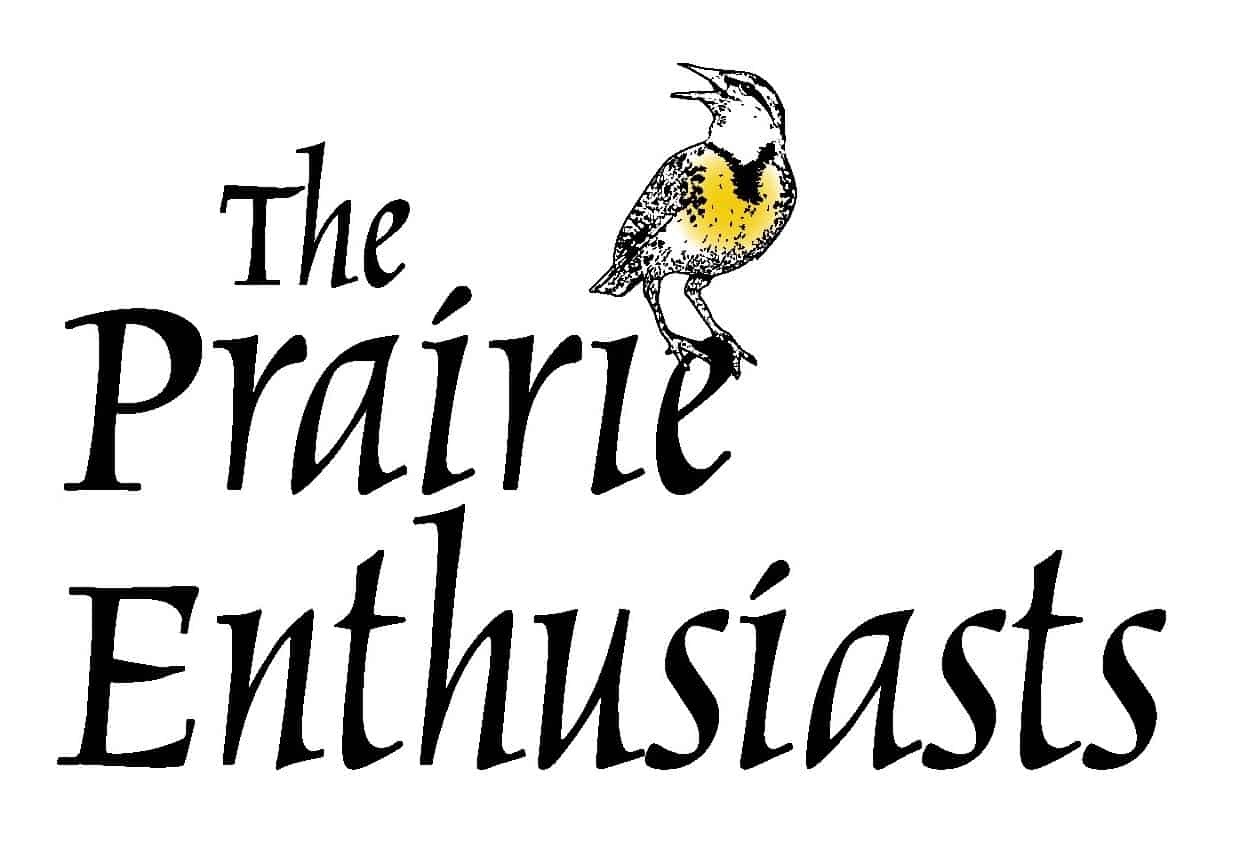
by The Prairie Enthusiasts | Jul 28, 2021 | News
“Success seems to be largely a matter of hanging on after others have let go.” William Feather
People who are passionate about prairie restoration are a rare breed. However, as the number of these prairie warriors grow, so too will the numbers of successfully grown rare and endangered plants in our states. We recently heard about some tiny successes with rare plants on a small farm in Illinois that are huge reasons for celebration.
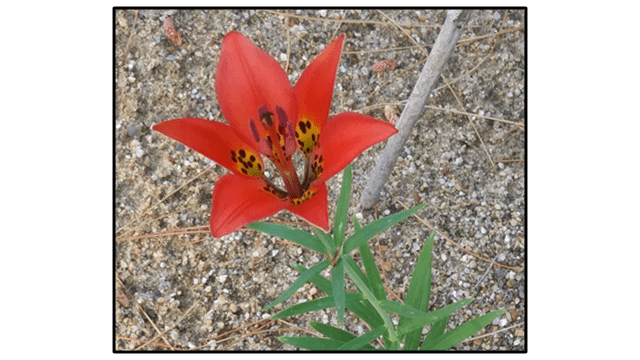
Wood Lily blooming – Photo by Rickie Rachuy
Where others might plant a seed and just move on if a plant didn’t grow, prairie enthusiasts often find the most rare or endangered plants and work for years to get just a single bloom on one plant. It is this grit and determination that will, over time, make an incredible difference in ecosystems across the upper Midwest.
One such story is unfolding in Stockton, Illinois. NIPEs Rickie Rachuy is thrilled to share some exciting success stories in the rare plants garden at Lonetree Farm.
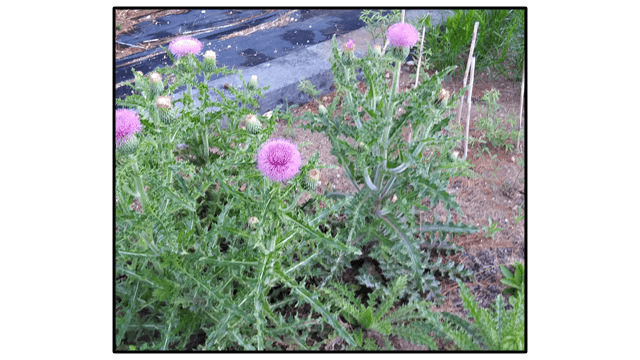
Hill’s Thistle – Photo by Rickie Rachuy
– The first blooms on Asclepias purpurascens, started from seed in 2015
– The first seedlings of Gentianella quinquefolia after three years of trying to get wild-harvested seed to germinate
– The first flowers on Lilium philadelphicum (wood lily) from seed donated by Kathie Brock after the initial seedlings were uprooted by raccoons in 2017
– The first flowers on Circium hillii (Hill’s thistle) from seed donated by Tom Mitchell in 2019
– Several healthy Clematis pitcherii plants from cuttings taken from the only known plant in northwest Illinois
– One seedling of Clematis occidentalis, from Prairie Moon seed started Feb. 1, 2020
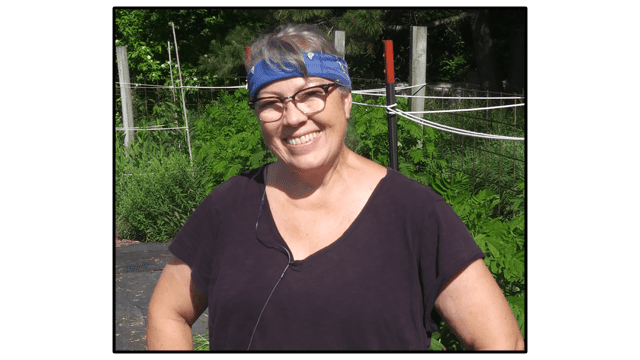
Karen Reed, newest addition to the NIPE team, and garden/seed shed helper. (Photo by Rickie Rachuy)
Thank you for sharing this great news, Rickie. While to the general population, these may appear to be little events, in the world of prairie restoration, these are some moments to truly treasure and celebrate. We can’t wait to have an update a year from now to hear how things are going.
Do you have some success stories you would like to share? Please send those to ksolverson@theprairieenthusiasts.org for possible inclusion in one of our future newsletters.

by The Prairie Enthusiasts | Jul 28, 2021 | News
There couldn’t have been a more idyllic scene for The Prairie Enthusiasts picnic and annual meeting. Basking in the glow of a perfect summer day, members gathered on Sunday, July 18th, 2021 at the UW-Milwaukee Field Station at Waukesha to learn and celebrate together. There was a palpable energy, a feeling of hope permeating the day, given all that has been accomplished in the past year. After a year of working independently in the field under COVID-19 restrictions, it was a welcome day of celebration. This day was all about reconnecting our prairie community through conversation, sharing, education and the passion that is at the heart of all we do.
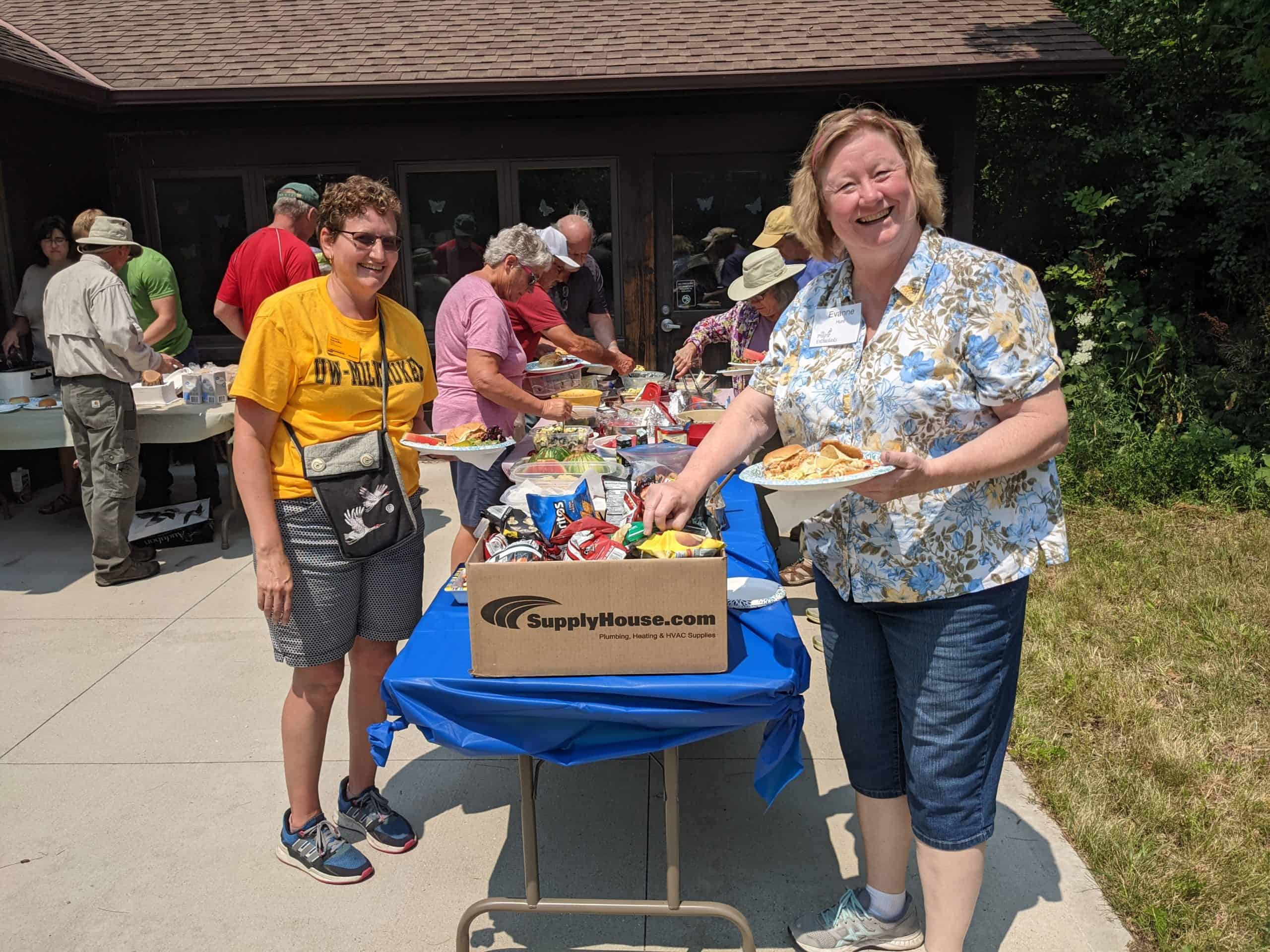 Professor Teresa Schueller, Director of UWM at Waukesha Field Station (left) and St. Croix Valley Chapter member and TPE board representative Evanne Hunt (right) (Photo by Caleb DeWitt)
Professor Teresa Schueller, Director of UWM at Waukesha Field Station (left) and St. Croix Valley Chapter member and TPE board representative Evanne Hunt (right) (Photo by Caleb DeWitt)
This year, the Glacial Prairie chapter of The Prairie Enthusiasts hosted our event. Many thanks to the volunteers who put in long hours to pull this together, as it is no small task. Members gathered for a potluck followed by a speaker from each one of the chapters.
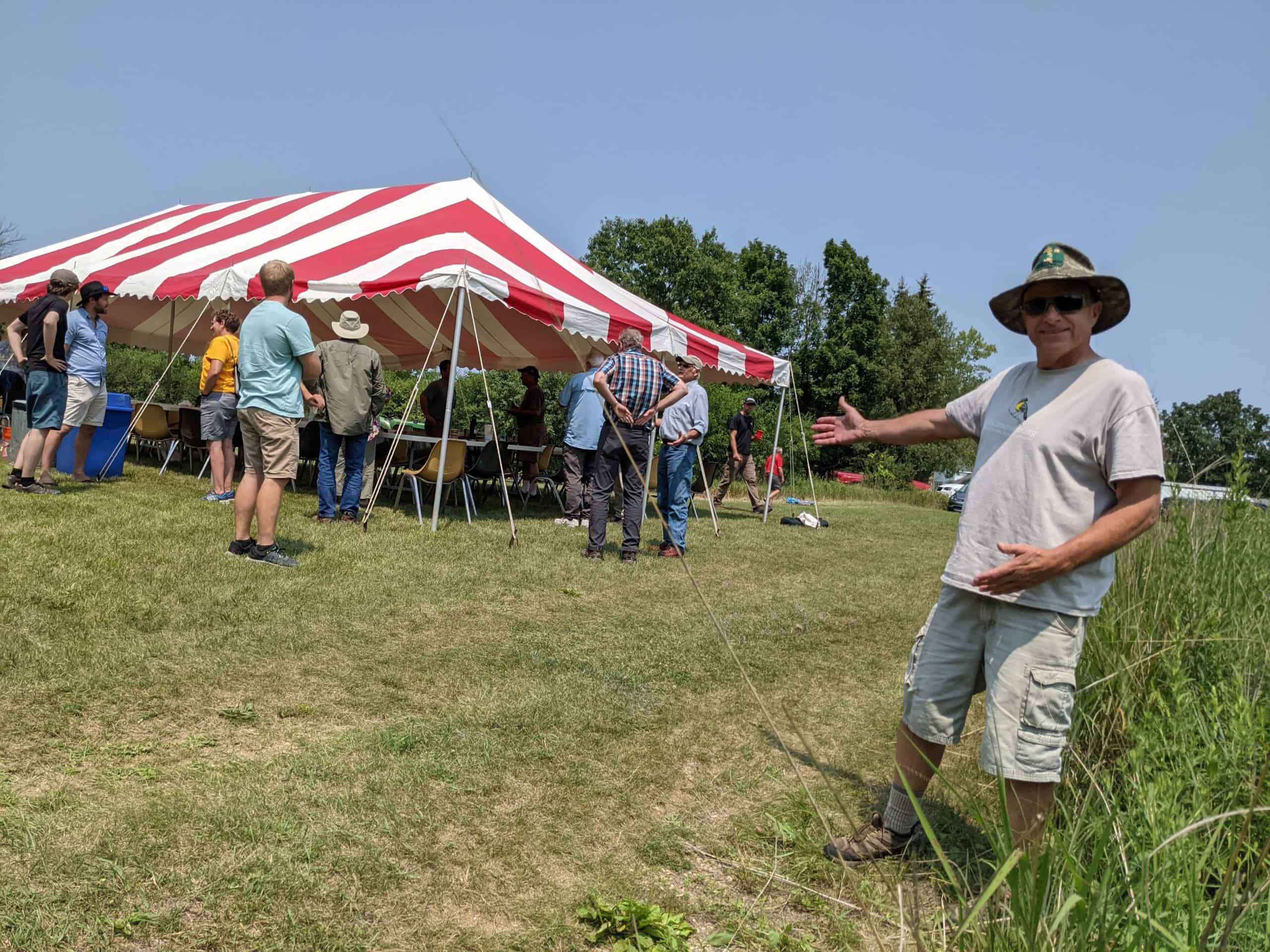 Tom Zagar, Ecologist and Burn Boss for the Glacial Prairie Chapter. (Photo by Caleb DeWitt)
Tom Zagar, Ecologist and Burn Boss for the Glacial Prairie Chapter. (Photo by Caleb DeWitt)
After lunch, it was time to fill our minds with educational tours. The tours were a great success and filled with incredible conversation. Marlin Johnson, the resident manager of the 98-acre field station for 45 years, gave a tour and discussed the process of how a dedicated group of individuals were able to convert fields into a sustainable prairie/savanna.
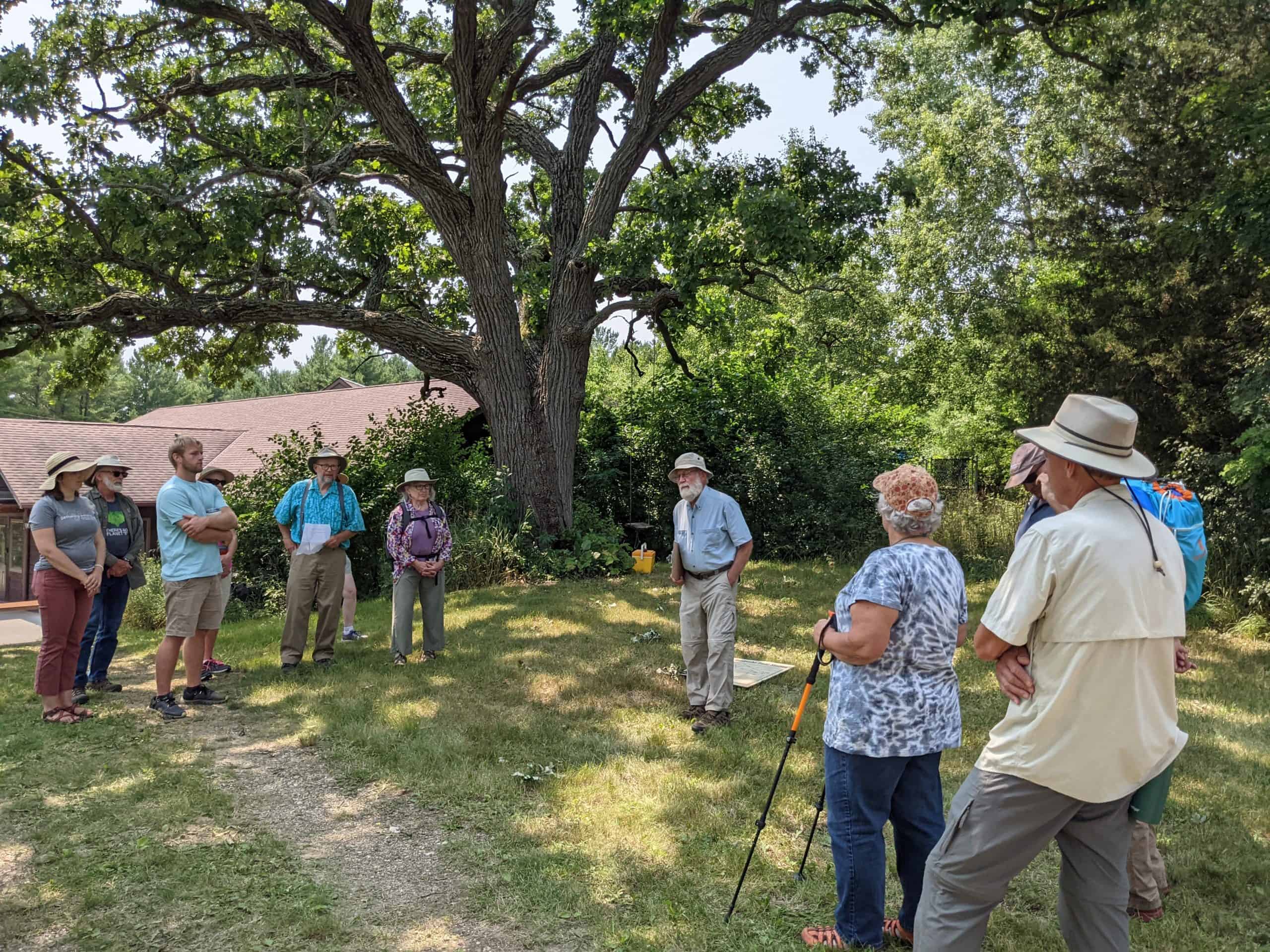 Professor emeritus Marlin Johnson leads a history tour. (Photo by Caleb DeWitt)
Professor emeritus Marlin Johnson leads a history tour. (Photo by Caleb DeWitt)
Bill Schneider led an Aldo Leopold tour focused on Leopold’s use of prairie/savanna plants and animals to make a philosophical statement. There was also an opportunity to visit a unique wood-fired kiln, built with more than 8,000 bricks, which was modeled after an ancient Japanese Anagama kiln.
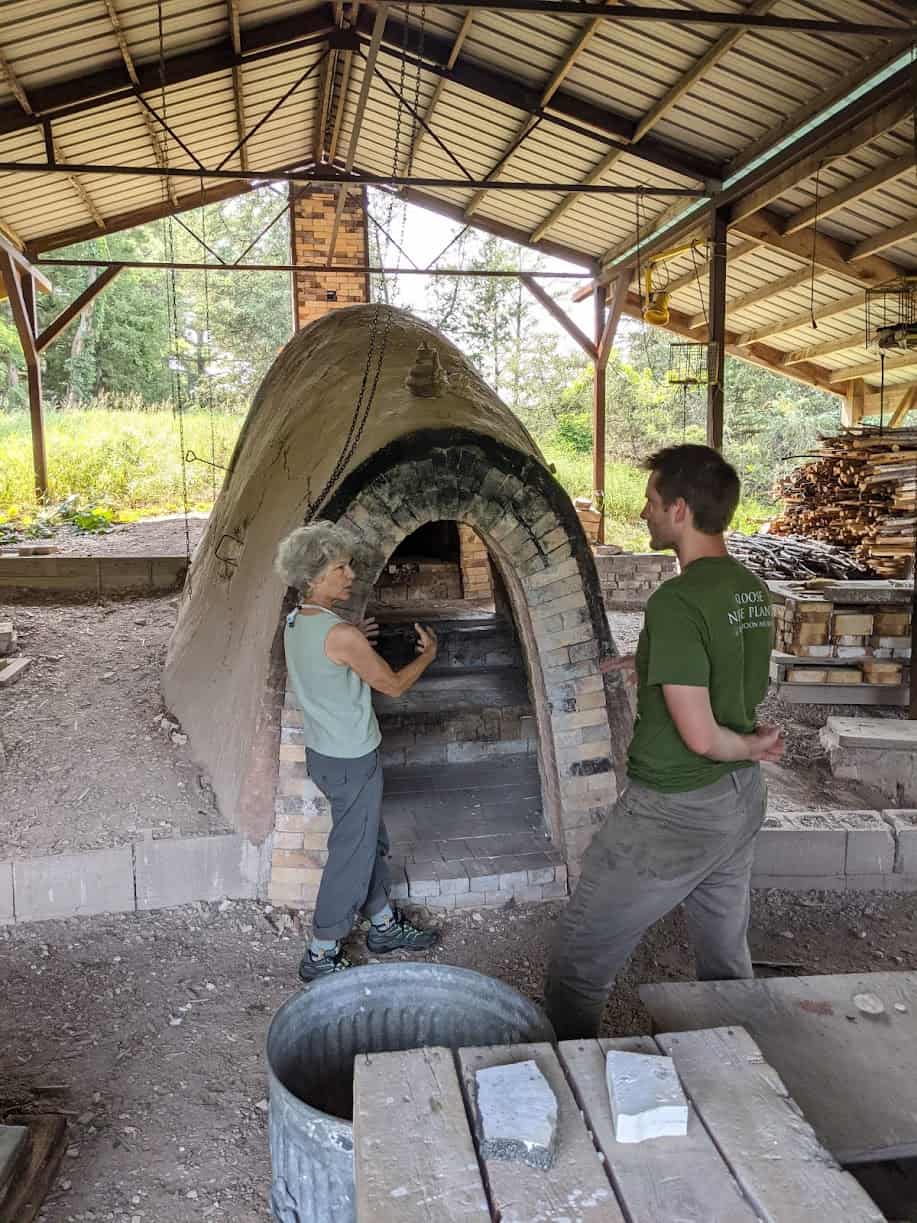 Introduction to the wood-fired kiln during the annual picnic field trips. (Photo by Ron Lutz II)
Introduction to the wood-fired kiln during the annual picnic field trips. (Photo by Ron Lutz II)
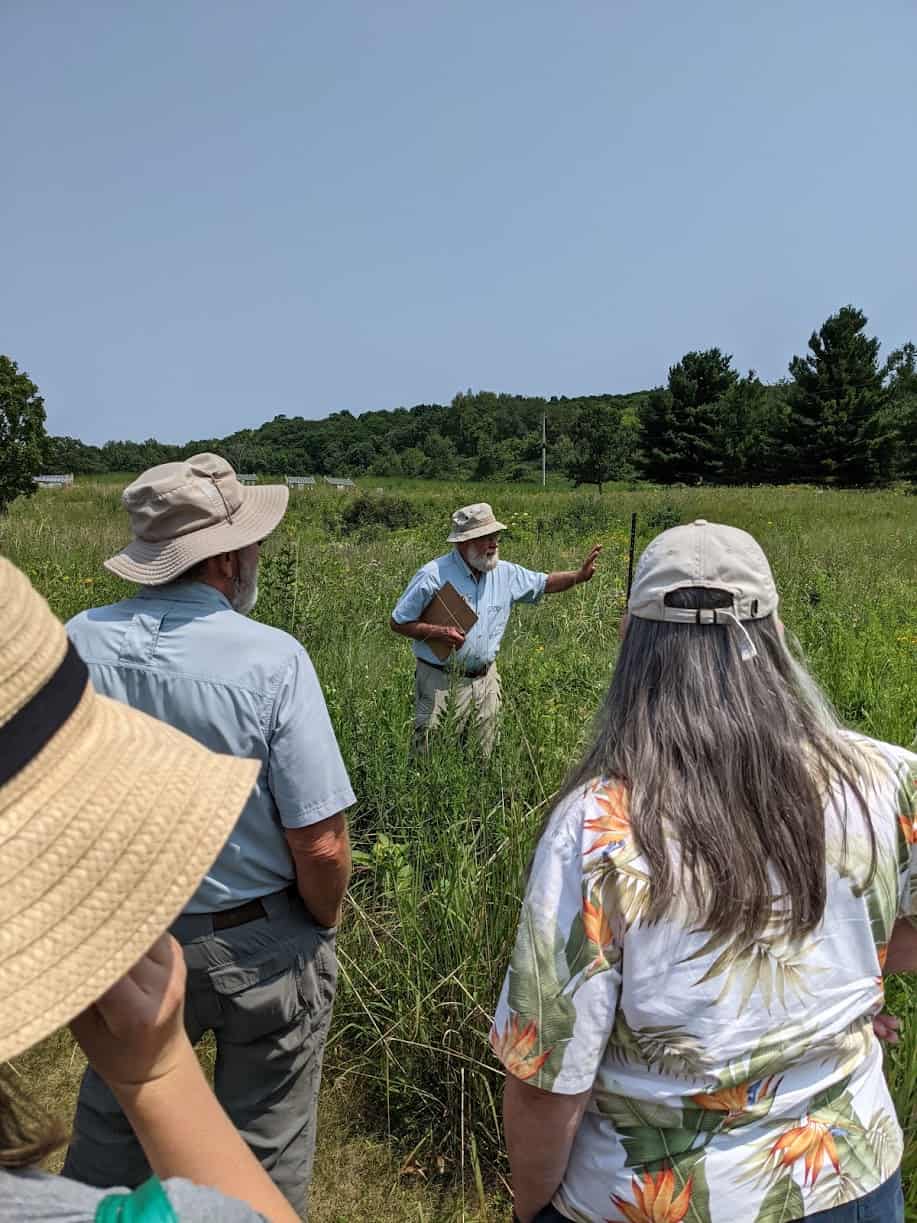 More discussion of how the prairie restoration process began (Photo by Ron Lutz II)
More discussion of how the prairie restoration process began (Photo by Ron Lutz II)
The prairie was teeming with life, and the perfect setting for our time together. Walking among the ancient oaks, members were drawn to one particularly majestic specimen. Reconnecting with the oaks, the plants and living creatures of the prairie, and the people who make this all possible gave everyone a renewed sense of purpose as we prepare for the next season of prairie restoration and management.
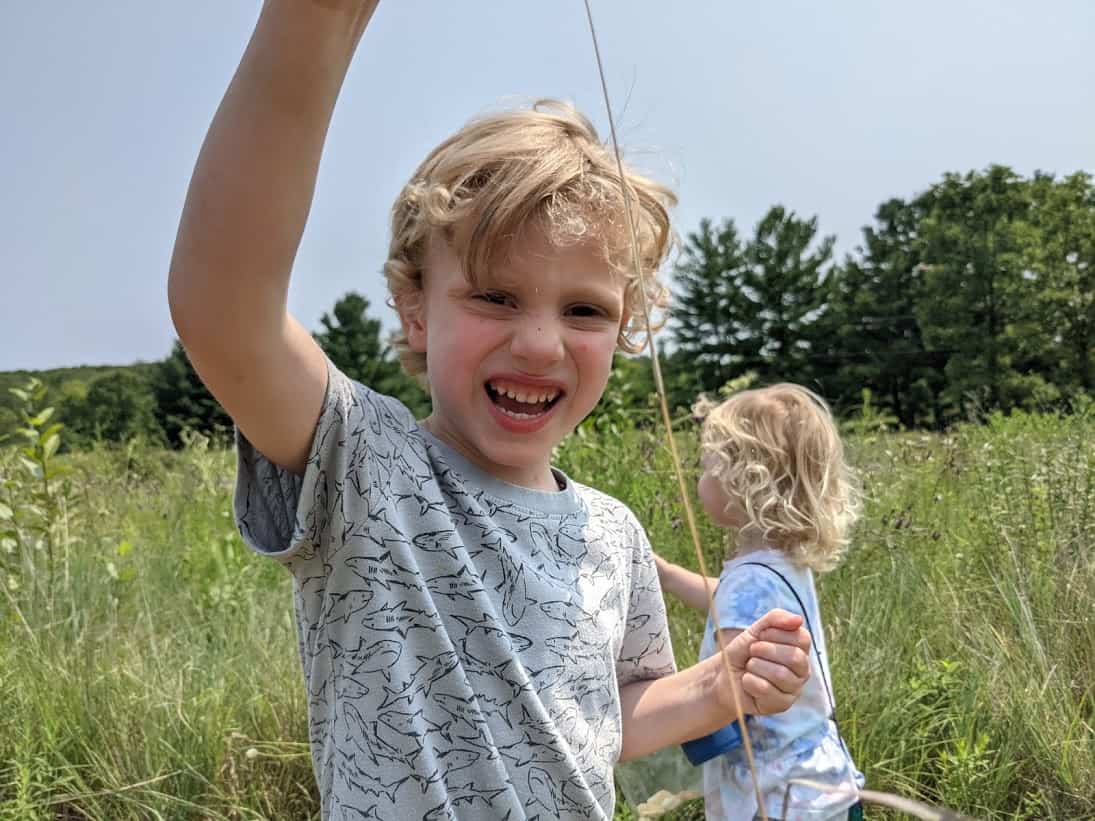 Young prairie enthusiasts showing off their discoveries and enjoying the prairie. (Photo by Caleb DeWitt)
Young prairie enthusiasts showing off their discoveries and enjoying the prairie. (Photo by Caleb DeWitt)
Just as the prairies come back stronger than ever after a fire, we also look forward to a year of tremendous growth in the coming year.





 Professor Teresa Schueller, Director of UWM at Waukesha Field Station (left) and St. Croix Valley Chapter member and TPE board representative Evanne Hunt (right) (Photo by Caleb DeWitt)
Professor Teresa Schueller, Director of UWM at Waukesha Field Station (left) and St. Croix Valley Chapter member and TPE board representative Evanne Hunt (right) (Photo by Caleb DeWitt) Tom Zagar, Ecologist and Burn Boss for the Glacial Prairie Chapter. (Photo by Caleb DeWitt)
Tom Zagar, Ecologist and Burn Boss for the Glacial Prairie Chapter. (Photo by Caleb DeWitt) Professor emeritus Marlin Johnson leads a history tour. (Photo by Caleb DeWitt)
Professor emeritus Marlin Johnson leads a history tour. (Photo by Caleb DeWitt)  Introduction to the wood-fired kiln during the annual picnic field trips. (Photo by Ron Lutz II)
Introduction to the wood-fired kiln during the annual picnic field trips. (Photo by Ron Lutz II) More discussion of how the prairie restoration process began (Photo by Ron Lutz II)
More discussion of how the prairie restoration process began (Photo by Ron Lutz II) Young prairie enthusiasts showing off their discoveries and enjoying the prairie. (Photo by Caleb DeWitt)
Young prairie enthusiasts showing off their discoveries and enjoying the prairie. (Photo by Caleb DeWitt)